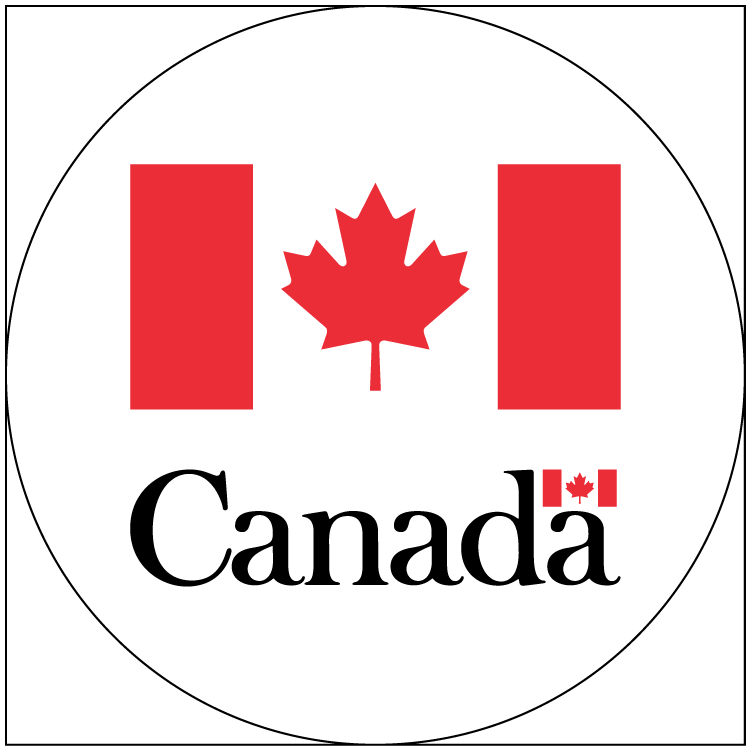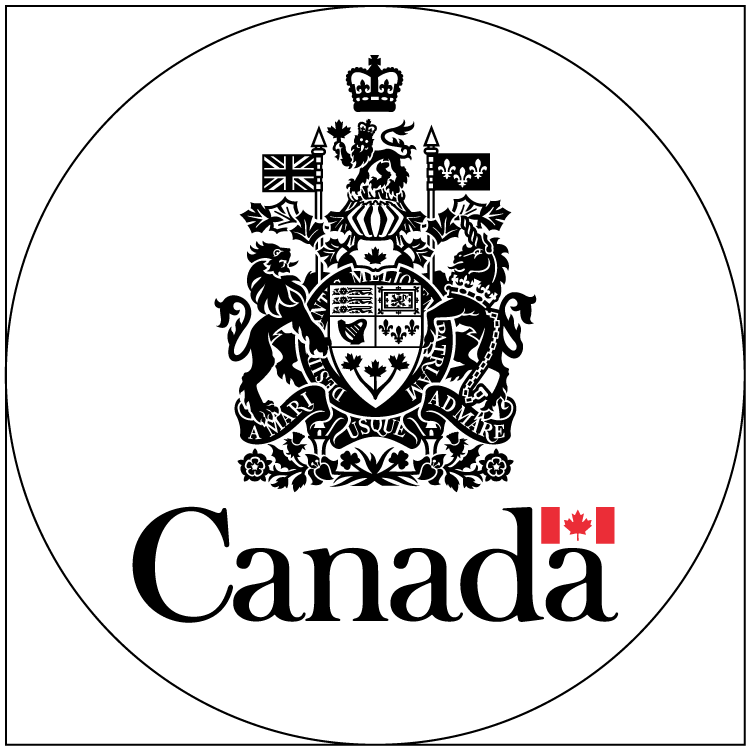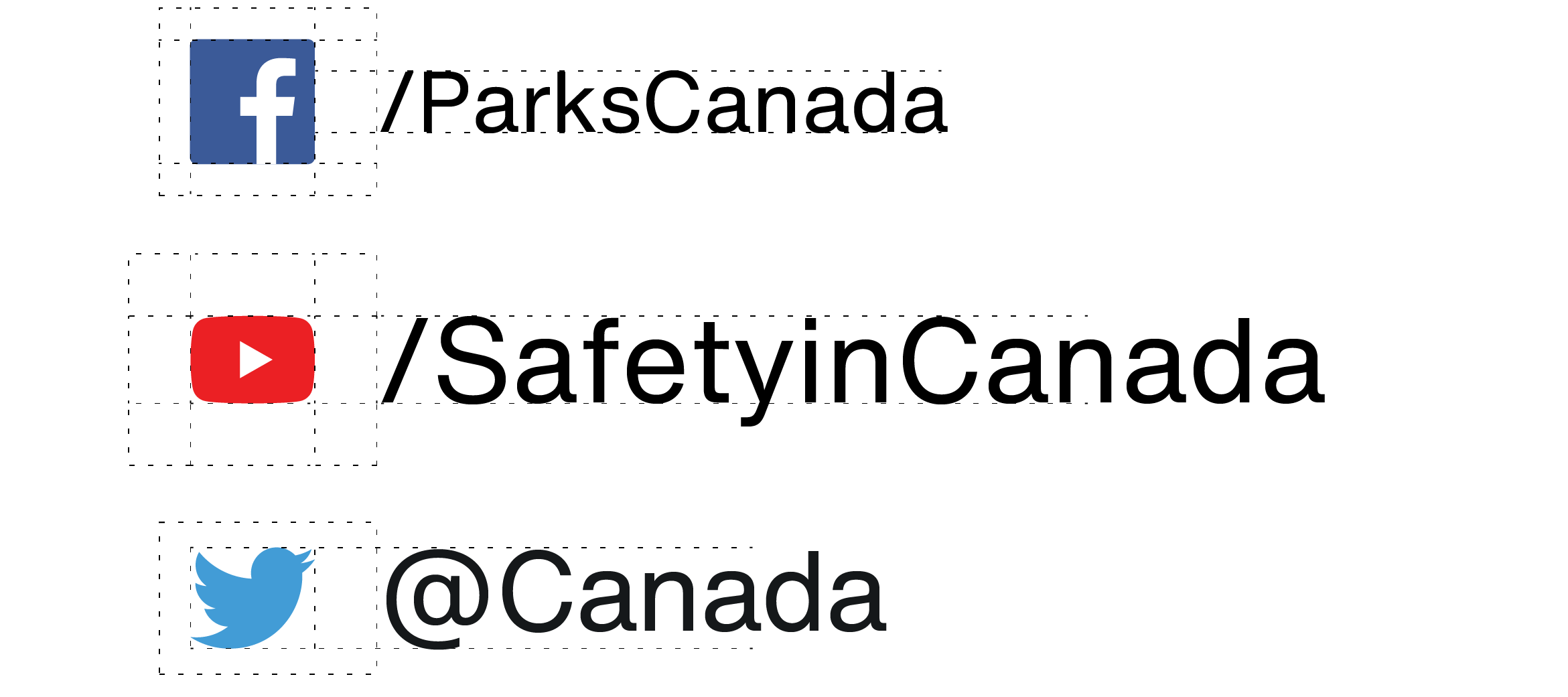Social media: Design Standard for the Federal Identity Program
The official symbols must be applied to official social media accounts and communications products posted on these accounts.
See Core elements and How to present the official symbols for details about colour, sizing, and other aspects of using the symbols.
-
Official social media accounts
Official social media accounts are used for official Government of Canada purposes such as communications, service delivery, collaboration and other purposes within the scope of a department’s mandate. These accounts are generally managed by a department’s communications staff.
Avatars
-
In this section
All official social media accounts of the Government of Canada are identified with one of the following avatars:
- the flag avatar
- the arms avatar
- a custom avatar
These avatars must only be used as profile photos on official social media accounts.
When applying the avatars, care must be taken to ensure that the official symbols are not cut off.
Departments must use the versions of the avatars that are maintained by the Communications and Federal Identity Policy Centre at the Treasury Board of Canada Secretariat (TBS).
Flag avatar
The flag avatar (see Figure 1) consists of the flag symbol and the Canada wordmark. The flag avatar is the default identifier for all official social media accounts.
Figure 1. Flag avatar, in square and circular layouts

Arms avatar
The arms avatar (see Figure 2) consists of the arms of Canada and the Canada wordmark. The arms avatar is only to be used for accounts that represent departments whose corporate signature contains the arms of Canada.
Agents of Parliament are not required to use the Canada wordmark in their avatar. They may use the arms of Canada alone or create a custom avatar.
Figure 2. Arms avatar, in square and circular layouts

Custom avatars
A custom avatar may be used to identify official social media accounts that:
- are associated with official themes under Canada.ca
- have a different or additional identifying symbol approved by the Treasury Board (for example, the RCMP badge or the Parks Canada beaver)
- use a different design approach to distinguish their accounts from other official social media accounts (for example, Canadian embassies)
A custom avatar must be:
- developed in consultation with the Communications and Federal Identity Policy Centre at TBS
- approved by the department’s head of communications
Custom avatar design
All custom avatars must use the standard colour version of the Canada wordmark (black letterforms and FIP red flag symbol on a white background).
Departments must use the digital master template of the custom avatar created and maintained by the Communications and Federal Identity Policy Centre at TBS. Departments are responsible for inserting their custom imagery into the template.
Get a copy of the avatars
To obtain a copy of the flag avatar, arms avatar and the template for a custom avatar, contact your department’s coordinator.
Contact your FIP coordinatorText identifiers
Departments must select one of the following options for their text identifiers:
- the registered applied title or abbreviation
- keywords or abbreviations that are commonly understood by target audiences (for example, RCMP)
When an official social media account represents a government official:
- the account address is based on the title of the office or position (for example, @Clerk_GC and /ClerkGC) and not the individual’s name
- the display name can use an individual’s name if the name field can be updated
-
-
Products posted on official social media accounts
Requirements for products posted on official social media accounts are available under the specific product (for example, videos, static graphics).
-
Using social media icons
Icons of social media providers can be used on:
- digital communications products such as websites: in these products, the icons must be hyperlinked to official social media accounts
- products such as posters, pamphlets, billboards, and television ads: in these products, the icons must be accompanied by the address of the official social media account (see Figure 3 for examples)
Figure 3. Examples of Facebook, YouTube and Twitter social media icons with official social media account addresses, following each provider’s layout guidelines

Supporting tools
- Mandatory Procedures for Social Media and Web Communications
- Prescribed processes for creating, configuring and disposing official social media accounts (accessible only on the Government of Canada network)
- Procedures for Publishing
- Federal identity glossary
Looking for another product
Find a product using the filter.
| Category | Products |
|---|---|
| Ads | Search engine marketing (SEM) ads, paid advertising, static ads, video ads, animated ads, audio ads |
| Awards | Long service awards, departmental awards, certificates |
| Exhibits and events | Roll-up banners, backdrops, podium signs, press conferences, live-streamed events, participating or attending an event |
| Mobile applications | App icons, launch screens, post-launch screens, app stores |
| Motion graphics | Animated text or images, animated effects |
| Partnering (technical specifications) | Federal contributions, fair acknowledgement, sponsoring arrangements |
| Personnel identification | Department-issued clothing, ID cards |
| Podcasts | Cover art, artwork for individual episodes, podcast listings and descriptions |
| Printable products and static graphics | Publications, posters, infographics, presentations, graphics shared on social media, images |
| Promotional items | Novelties, mementoes |
| Signage (technical specifications) | Primary signs, operational signs, project signs, tactile signs |
| Social media | Avatars, text identifiers, official social media accounts, icons |
| Stationery (technical specifications) | Letterhead, envelopes, business cards |
| Text messages | Text messages sent by or on behalf of the Government of Canada, emergency alerts |
| Vehicles (technical specifications) | Markings on ground, air, marine vehicles |
| Videos | Films, audio-visual, multi-media presentations and productions |
| Websites | Public-facing websites, internal sites, intranets, extranets, password-protected sites, web applications |